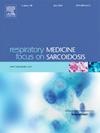Analysis of risk factors for complications of foreign body aspiration in children
IF 3.1
3区 医学
Q2 CARDIAC & CARDIOVASCULAR SYSTEMS
引用次数: 0
Abstract
Objective
This study aims to investigate risk factors associated with complications of Foreign Body Aspiration in children, providing reference for clinical prevention and treatment.
Methods
Clinical data from 951 pediatric patients with Foreign Body Aspiration admitted to Gansu Provincial Maternal and Child-care Hospital between January 2017 and December 2021 were retrospectively analyzed. Patients were categorized into complication-free and complication groups based on occurrence of complications. Univariate and multivariate binary logistic regression analyses were performed to identify risk factors associated with complications.
Result
Multivariate analysis revealed that right-sided foreign bodies (OR = 4.452, 95 % CI: 1.084–18.283, P = 0.038) and confirmed history of inhalation (OR = 1.767, 95 % CI: 1.121–2.787, P = 0.014) were independent risk factors for complications. while glottic foreign bodies (OR = 0.657, 95 % CI: 0.472–0.915, P = 0.013), foreign body duration ≤1 day (OR = 0.256, 95 % CI: 0.114–0.573, P = 0.001), urban residence (OR = 0.564, 95 % CI: 0.387–0.823, P = 0.003), and foreign body occurrence in autumn (OR = 0.596, 95 % CI: 0.366–0.972, P = 0.038) were protective factors. Foreign body type, quantity, and CT confirmation status showed no significant impact on complication occurrence (P > 0.05).
Conclusion
Right-sided foreign bodies and a clear history of aspiration increase the risk of complications, whereas glottic foreign bodies, early diagnosis and treatment, urban residence, and foreign body ingestion in autumn exert protective effects. Clinicians should prioritize high-risk pediatric patients, enhance early diagnosis and intervention to reduce the risk of complications.
儿童异物吸入术并发症危险因素分析
目的探讨儿童异物吸入术并发症的相关危险因素,为临床预防和治疗提供参考。方法回顾性分析2017年1月至2021年12月甘肃省妇幼保健院收治的951例小儿异物吸入患者的临床资料。根据并发症的发生情况将患者分为无并发症组和并发症组。进行单因素和多因素二元logistic回归分析,以确定与并发症相关的危险因素。结果多因素分析显示,右侧异物(OR = 4.4552, 95% CI: 1.084 ~ 18.283, P = 0.038)和确认吸入史(OR = 1.767, 95% CI: 1.121 ~ 2.787, P = 0.014)是并发症的独立危险因素。而声门异物(OR = 0.657, 95% CI: 0.472 ~ 0.915, P = 0.013)、异物持续时间≤1天(OR = 0.256, 95% CI: 0.114 ~ 0.573, P = 0.001)、城市居住(OR = 0.564, 95% CI: 0.387 ~ 0.823, P = 0.003)、秋季发生异物(OR = 0.596, 95% CI: 0.366 ~ 0.972, P = 0.038)是保护因素。异物类型、数量及CT确认情况对并发症发生无显著影响(P > 0.05)。结论右侧异物和明确的误吸史增加了并发症发生的风险,而声门异物、早期诊断和治疗、城市居住和秋季异物摄入对并发症的发生有保护作用。临床医生应优先考虑高危儿童患者,加强早期诊断和干预,以减少并发症的发生。
本文章由计算机程序翻译,如有差异,请以英文原文为准。
求助全文
约1分钟内获得全文
求助全文
来源期刊

Respiratory medicine
医学-呼吸系统
CiteScore
7.50
自引率
0.00%
发文量
199
审稿时长
38 days
期刊介绍:
Respiratory Medicine is an internationally-renowned journal devoted to the rapid publication of clinically-relevant respiratory medicine research. It combines cutting-edge original research with state-of-the-art reviews dealing with all aspects of respiratory diseases and therapeutic interventions. Topics include adult and paediatric medicine, epidemiology, immunology and cell biology, physiology, occupational disorders, and the role of allergens and pollutants.
Respiratory Medicine is increasingly the journal of choice for publication of phased trial work, commenting on effectiveness, dosage and methods of action.
 求助内容:
求助内容: 应助结果提醒方式:
应助结果提醒方式:


